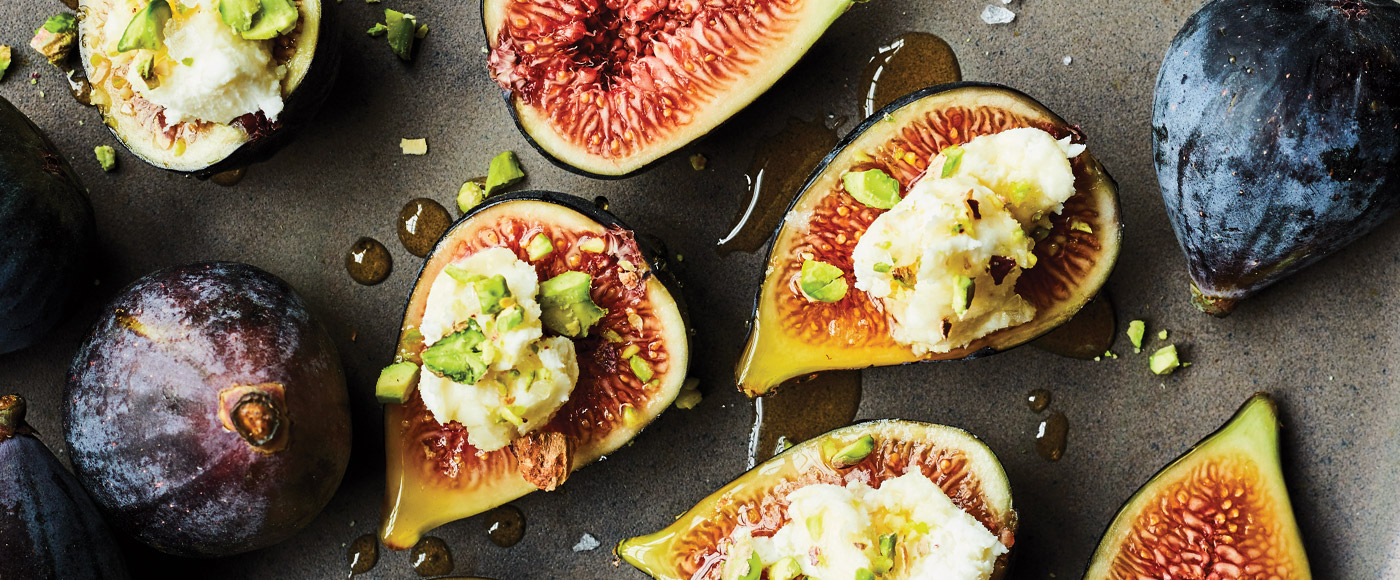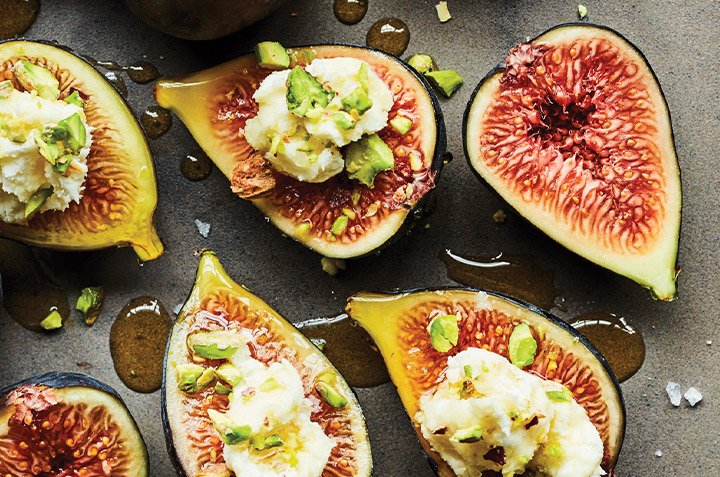1. Secret identity
The fig, as we know it, is not a true fruit in the strict botanical sense. The actual fruits are the tiny seeds (achenes) inside.
2. Drop spot
When shopping for figs, seek out ones with a small, milky drop forming at the base. This is a sign of freshness. Once picked, figs stop ripening. Keep your eye out for plump ones—not too firm, not too soft. And since they spoil quickly, they should be eaten fairly soon, for instance on a crostini.
3. Made in the USA
The fig tree is fickle and grows best in climates with plenty of warm weather and sunshine. So it’s hard, but not impossible, to find local figs. At RICARDO, we have a fig tree on our terrace. The harvest is scant, but the cachet of growing your own figs makes up for it. Though they’ve been cultivated for thousands of years in the Mediterranean Basin, the ones we find at the local grocery store are mostly grown in California.
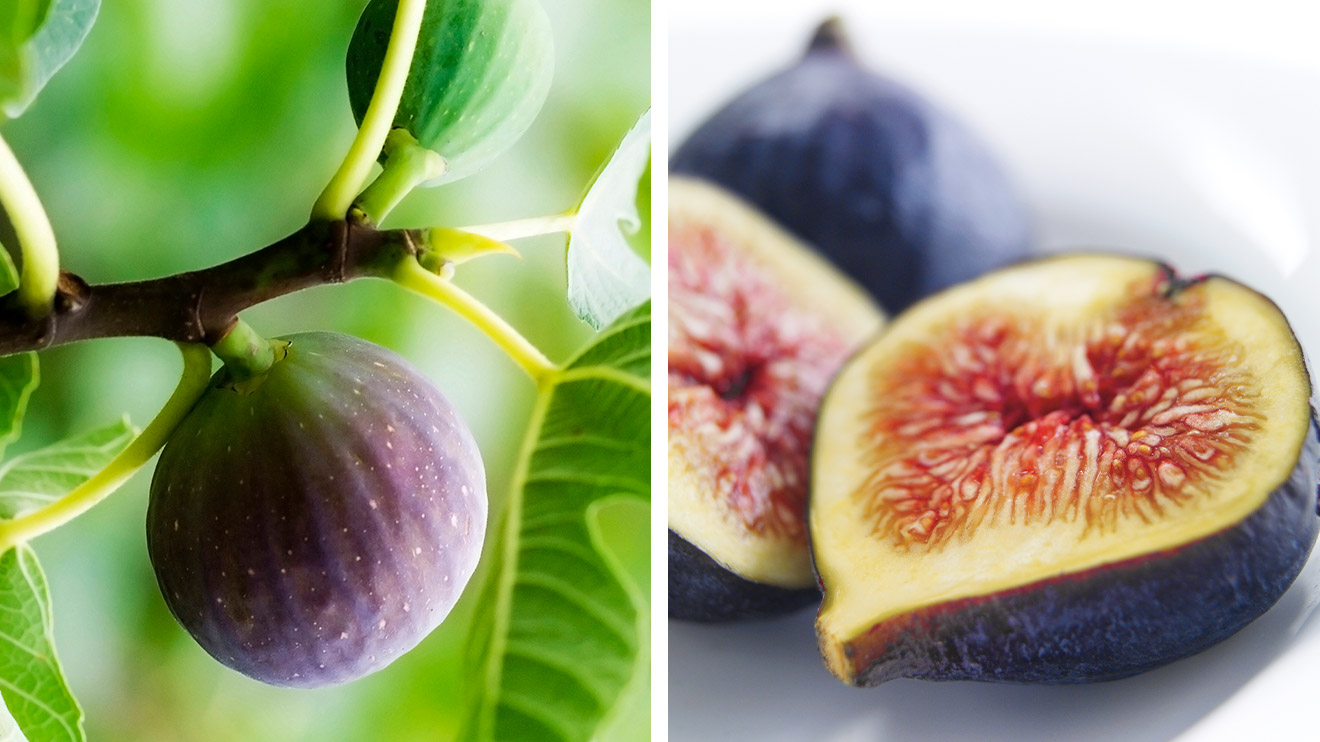
4. Skin deep
Figs are an excellent source of fibre, antioxidants and potassium, so they’re a nutritious choice. But like fennel, they contain a protein similar to one found in birch pollen that can cause an oral allergic reaction for those who suffer from pollen allergies.
5. Water weary
Figs have a delicate and highly porous skin. If they absorb too much water, their flavour will be altered and diluted by the excess liquid, so avoid rinsing them under the tap. To clean, just wipe them with a damp cloth.
For more recipe ideas:
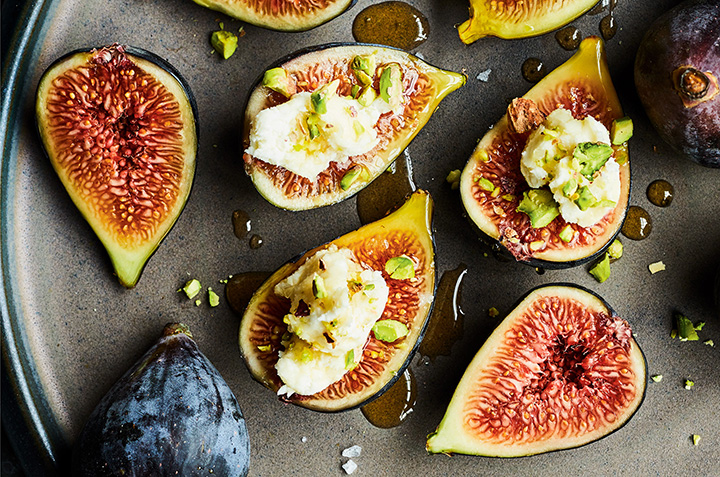
Hors d'Oeuvres
Fig and Goat Cheese
Bites with Pistachios
and Honey
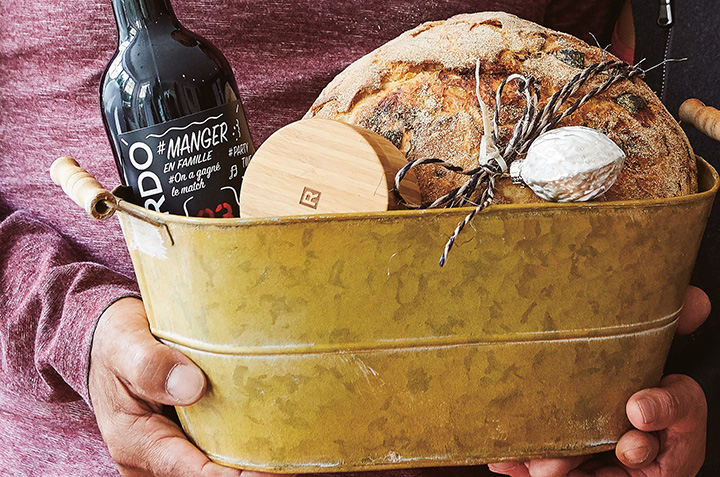
Savoury Breads
Cheddar and Fig Bread
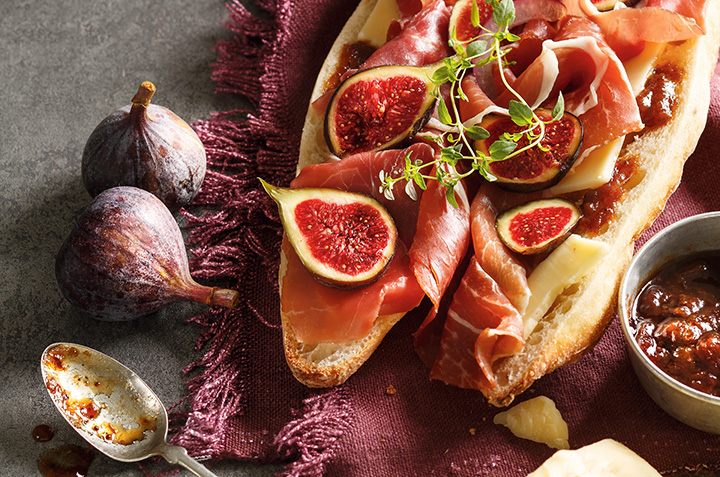
Sandwiches
Double Fig and Prosciutto
Baguette Sandwich
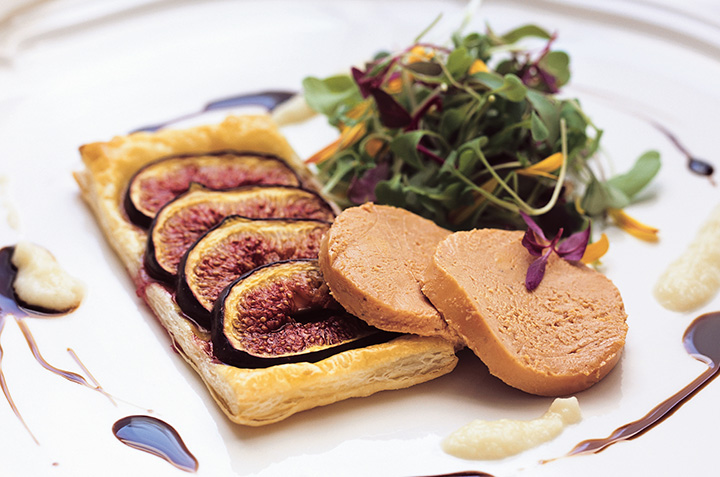
Hors d'Oeuvres
Thin Fig and
Foie Gras Tarts
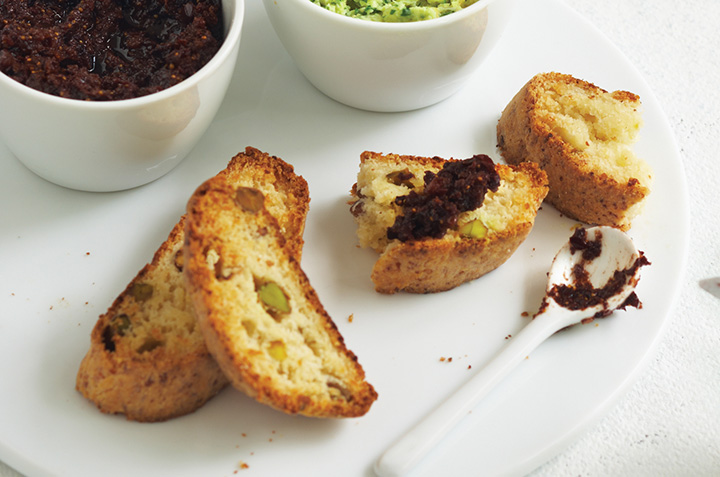
Dips and Salty Spreads
Fig Tapenade

